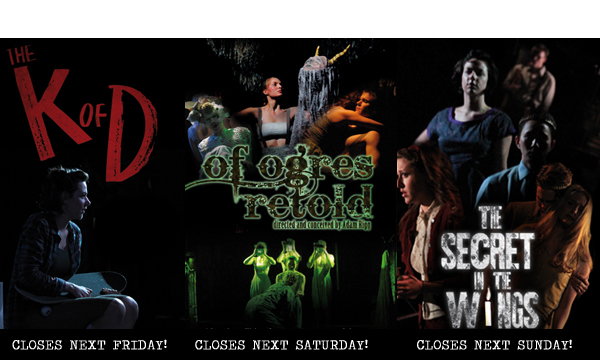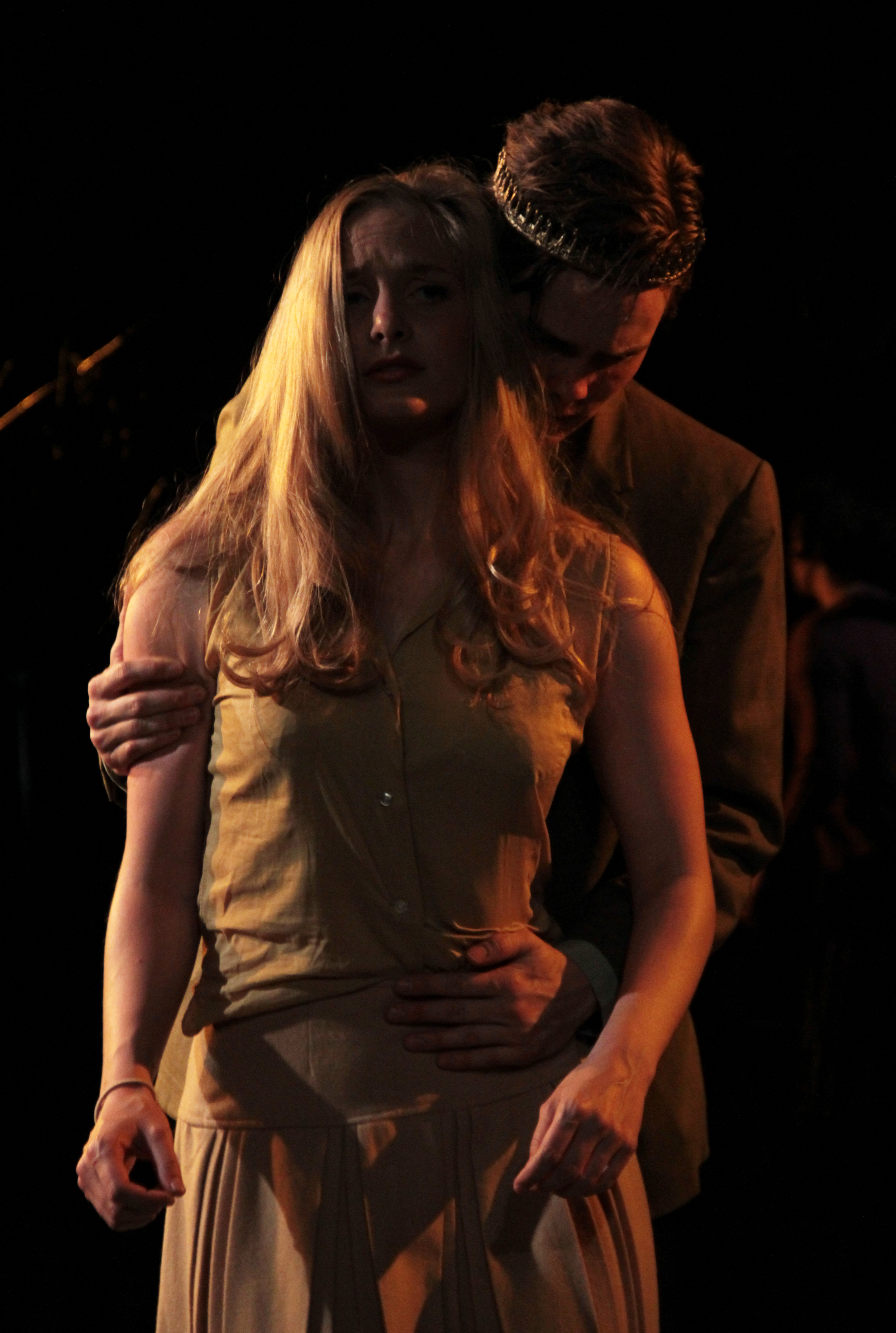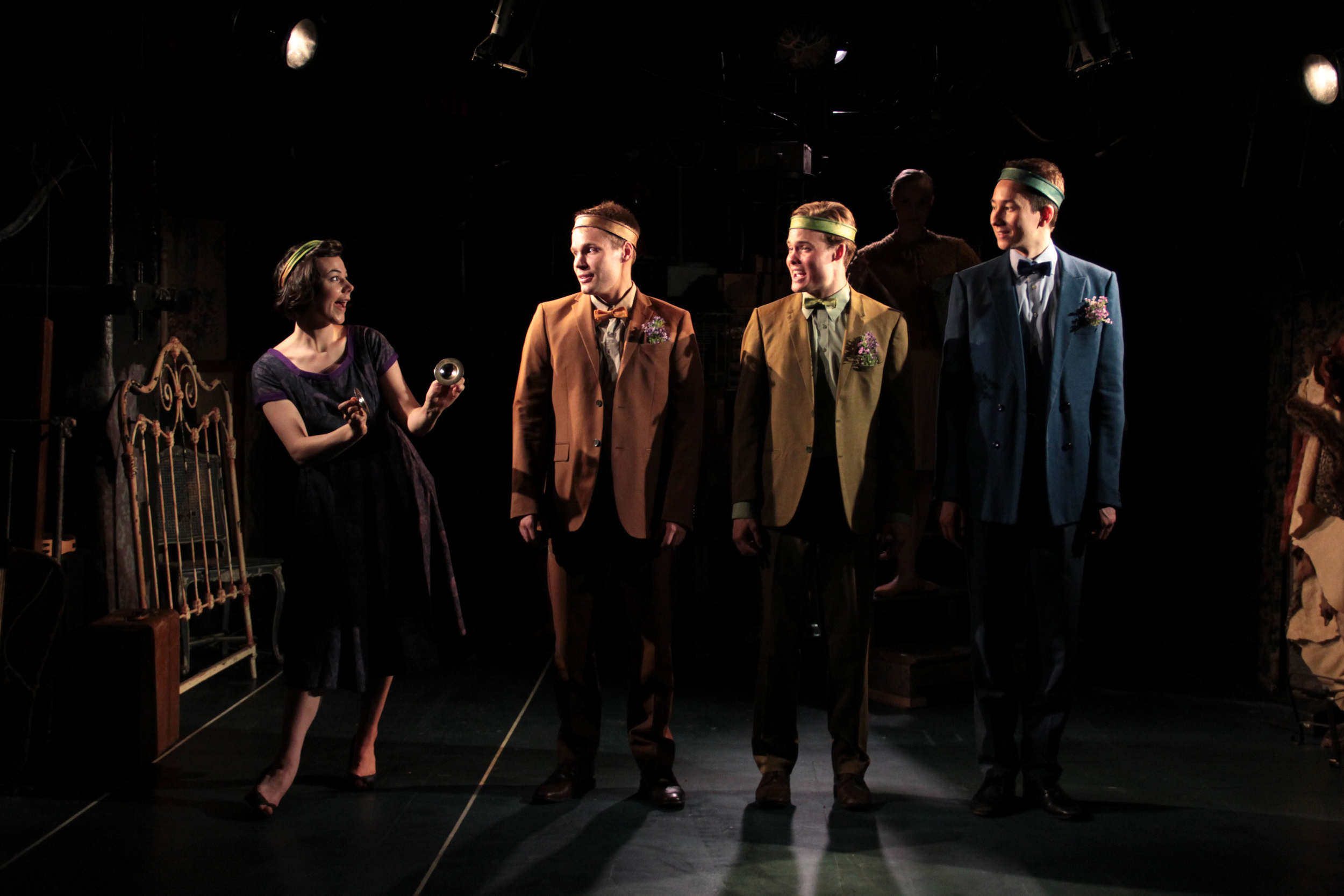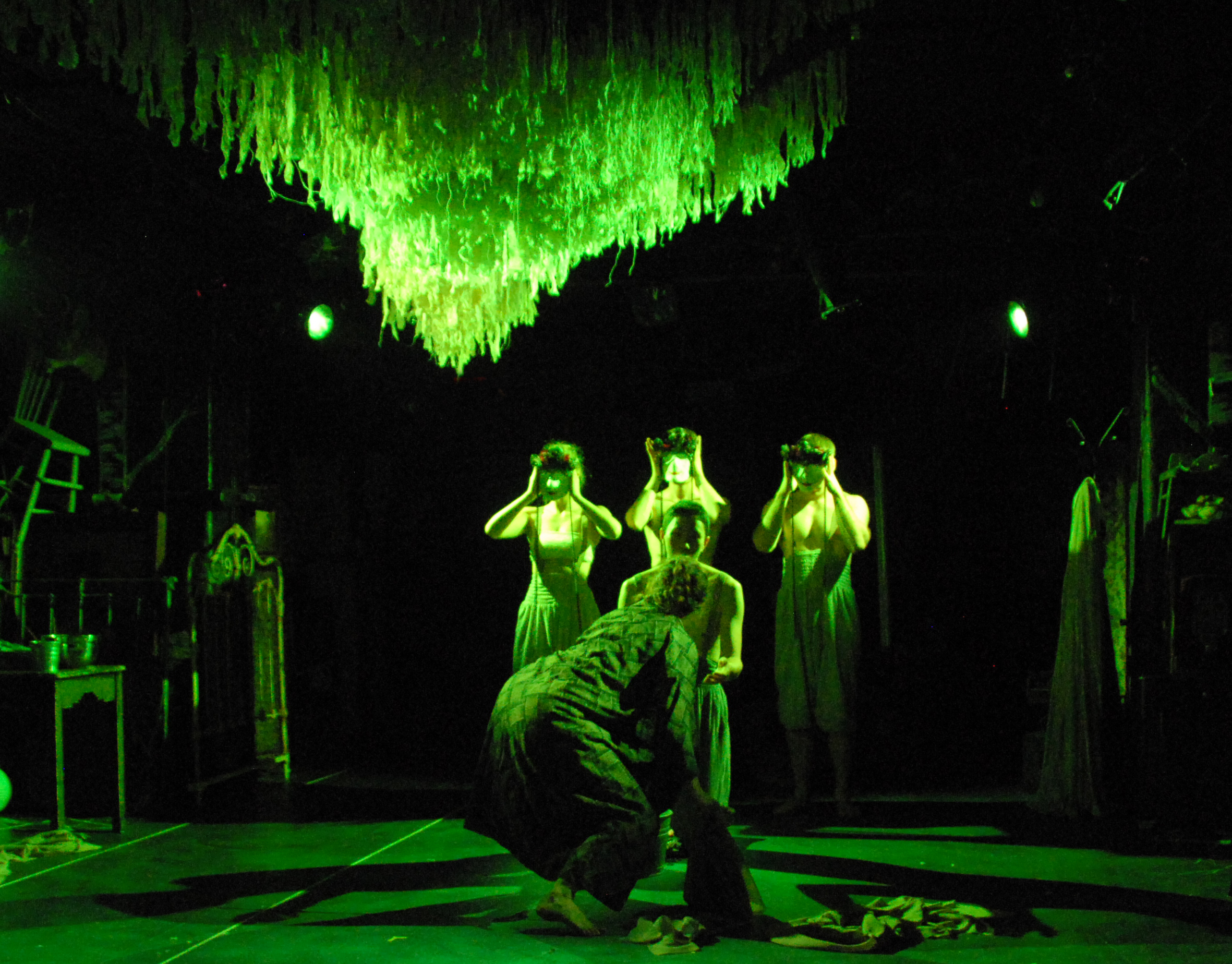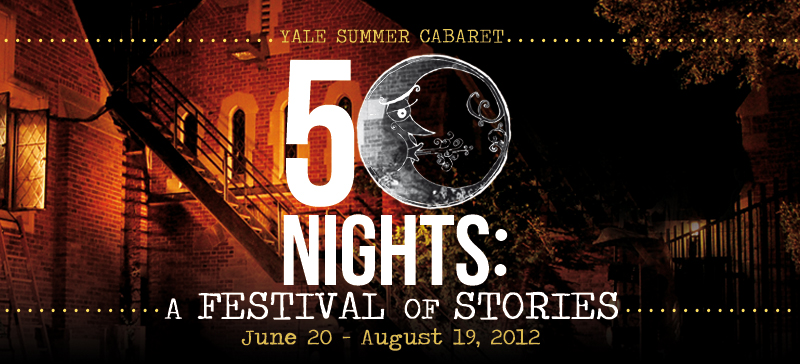 Summer has entered the month of August, and that means the usual hiatus before things begin again in September. If you can tear yourself away from the Olympics to see something happening locally, let us remind you that the Yale Summer Cabaret season, 50 Nights: A Festival of Stories, is drawing to its close. There are extremely limited opportunities remaining to see three plays that evoke the art of storytelling in unique and mutually supporting ways.
Summer has entered the month of August, and that means the usual hiatus before things begin again in September. If you can tear yourself away from the Olympics to see something happening locally, let us remind you that the Yale Summer Cabaret season, 50 Nights: A Festival of Stories, is drawing to its close. There are extremely limited opportunities remaining to see three plays that evoke the art of storytelling in unique and mutually supporting ways.
K of D, a suspenseful one-person play by Laura Schellhardt, directed by Tanya Dean, and starring Monique Barbee as an entertaining assortment of teens and adults in rural Ohio, has only four more shows. Of Ogres Retold, the challenging dance, movement, music and puppet piece masterminded by Adam Rigg and the ensemble, is down to three more shows. And The Secret in the Wings, Mary Zimmerman’s daisy-chain of interlinked stories, directed with amusing flair by Margot Bordelon, has also dwindled to three and one of those, at last glance, has limited availability. Simply put: it’s now or never.
To aid in the viewing of all three before they become fondly recalled memories, a marathon festival will take place this Saturday, August 12th, with K of D at 1, Of Ogres Retold at 4:30, and The Secret in the Wings at 8.
Each play has an interesting approach to the common theme of storytelling, and seeing them in rapid succession, either all on Saturday at the marathon, or between this weekend and next, can only highlight the links.
K of D foregrounds the human dimension of stories—specifically that brand of story called “urban legend” (often rural in setting) that tends to involve a certain “believe it or not” quality, where tall-tale meets gossip to become a strange and fascinating “just-so” story of folk wisdom. Here the kids are a kind of Greek chorus to the local goings-on involving odd twins, the neighborhood sociopath, and forces from beyond the grave.
Of Ogres Retold mimes stories with movements and actions that require interpretation—making the audience find a way of turning what they see into narratives. Each vignette is based on a Japanese folktale, and all involve odd creatures that the cast enacts with fanciful and beautiful puppetry.
The Secret in the Wings takes us back to the place where all stories start: childhood and the “once upon a time” fairytales by the likes of the Brothers Grimm, here dramatized as a series of entertaining meditations on courtship and family ties told by a creepy neighbor to an anxious little girl.
As ever, the Cabaret’s cast and production team have found creative ways to transform the intimate, basement performing space into places where the imagination is free to follow these tales as they morph into one another and mesmerize us with their implications.
With so few shows left, we can expect lively and enthusiastic audiences, making the most of a summer treasure before it’s gone.
Wednesday 8/8 - Of Ogres Retold - 8pm - SOLD OUT Thursday 8/9 - The Secret in the Wings - 8pm - SOLD OUT Friday 8/10 - The K of D - 8pm Marathon Saturday 8/11 The K of D - 1pm | Of Ogres Retold - 4:30pm | The Secret in the Wings - 8pm
FINAL WEEK OF PERFORMANCES:
Wednesday 8/15 - The Secret in the Wings - 8pm Thursday 8/16 - The K of D - 8pm Friday 8/17 - The K of D - 8pm Saturday 8/18 - Of Ogres Retold - 2pm, 8pm Sunday 8/19 - The Secret in the Wings - 8pm Click here to BUY TICKETS now and make a reservation!
